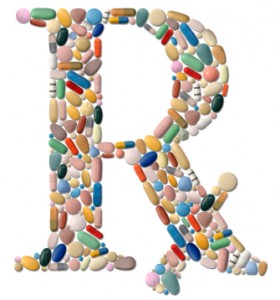 We hear lots of questions about the medications we use. Below is a simple explanation of our medications and why our doctors believe they are a good choice. All the medications we use are specifically designed for veterinary medicine.
We hear lots of questions about the medications we use. Below is a simple explanation of our medications and why our doctors believe they are a good choice. All the medications we use are specifically designed for veterinary medicine.
Sedative
We believe your pet should be as relaxed and pain-free as possible during our visit. We administer a sedative and wait until they are comfortable before proceeding. The sedative is a simple under-the-skin injection.
Cats receive a sedative containing up to four different medications that all work well together: one or two tranquilizers, an anti-anxiety medication and a narcotic pain reliever. We use a tiny needle for comfort and the medication is usually given over the shoulders or in the lower half of the body. Each of our doctors has a favorite technique which works well for them. The sedative can take anywhere from 3-15 minutes to take effect, depending on the cat’s medical condition and the body’s readiness to absorb and respond to the medications. It will produce a very relaxed, sleepy state.
Dogs receive a sedative mixture, too. They receive one or two tranquilizers and a narcotic pain reliever that work well together to produce a sleepy, relaxed state in about 10-15 minutes. This medication is also delivered with a small needle to facilitate comfort for the pet and is usually given over the shoulders, though anywhere will work just fine. If your dog is eating and enjoys treats, it is a lovely idea to save something special for the time the sedation is administered. We’ve found that peanut butter, ice cream, cream cheese or small meaty dog treats are great distractions.
The sedative is not full anesthesia, but it is very close. Your pet will be relaxed and comfortable, will want to lie down, and will be almost completely unaware of what is happening in the room. Their reflexes will still be present and a very loud noise or stimulating movement would be able to slightly awaken them. It is common to see leg movements as if dreaming. Breathing usually slows down but some dogs will occasionally pant for a moment or two. Our doctor’s presence and touch will not be something that bothers your pet and they likely will not be aware of anything our doctor is doing. The narcotic is a powerful pain reliever and it is unlikely that they feel any remaining sensation of discomfort from their condition.
Euthanasia medication
The euthanasia medication we use is the gold standard of care in veterinary medicine. In other words, this medication is the best available. It quickly and smoothly helps the pet to pass away, usually within about a minute or so. Pet owners sometimes ask if this medication works by paralyzing the body and this is not so. It is an anesthetic combined with another medication (one that is sometimes used to prevent seizures) and together they constitute a significant dose of anesthesia, enough to stop the body’s living processes. This is not a painful or scary event for a pet, especially for one who is already deeply relaxed. In fact, the pet will lose consciousness completely within just a moment or two of receiving the medication. Other body processes, including the heart beat, will then begin to slow down and finally stop.
We don’t usually see many outward signs of the medication’s effects. We may see a slight lift of the tail or stretch of the body. We sometimes see a brief increase in respiration. We see little else outwardly and we believe this is due to the very relaxed state they are in when they receive the medication. There is no evidence that the pet feels any discomfort or distress while this medication is being administered. Our clients report their impressions that this experience appears to be a very peaceful and gentle process for their pet.
Questions or Concerns
We welcome you to share your specific questions or concerns with our support team at (612) 354-8500. We want you to feel comfortable and informed about what will happen during the appointment.
Special note: For the sake of safety, we won’t list drug names or doses here but you are welcome to ask the veterinarian during the visit.

Pingback: What to Expect During the Euthanasia Appointment | MN Pets